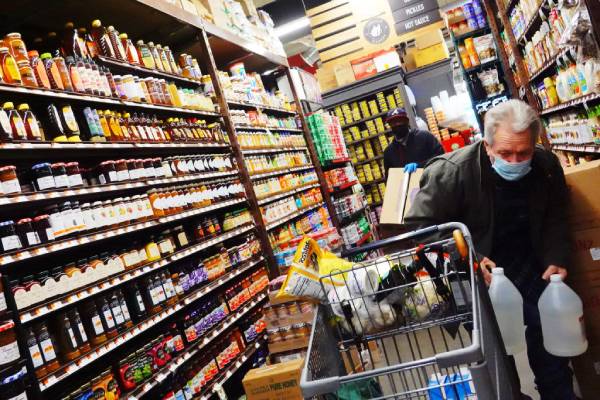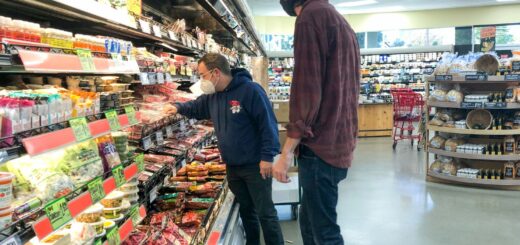Wholesale inflation climbed 0.8% in February, lower than gauge yet up 10% from the year before

- The maker cost record rose 0.8% in February, somewhat lower than the 0.9% Dow Jones gauge.
- Discount fuel costs flooded over 14%, assisting feed the greatest single-month with expanding at conclusive interest merchandise costs ever in information returning to 2009.
- Feature PPI was up 10% from a year prior, tying January for the greatest addition of all time.
Discount costs sped up again in February as solid buyer interest and pandemic-related inventory network growls kept on filling the most elevated expansion in many years.
One more flood in energy costs pushed discount merchandise costs to their greatest one-month bounce on record in February, as indicated by Labor Department information delivered Tuesday.
The Labor Department said Tuesday that its maker cost record, which estimates expansion at the discount level before it arrives at shoppers, flooded 10% in February from the year-prior period. Consistently, costs developed by 0.8% – a slight lull from January, when the check spiked by 1.2%.
Last interest costs for merchandise bounced 2.4% for the month, the biggest move ever in information returning to December 2009, the Bureau of Labor Statistics said.
That pushed the feature maker cost record up 0.8% on the month, which really was somewhat lower than the 0.9% Dow Jones gauge.
Center expansion at the discount level, which bars the more unpredictable estimations of food and energy, expanded 0.2% for the month, following a 0.8% increment in January. Throughout recent months, center costs were up 6.6%.
Barring food, energy and exchange administrations, supposed center PPI rose simply 0.2%, well beneath the 0.6% assumption.
On a year-over-year premise, feature PPI rose 10%, equivalent to January and tied for the greatest year move of all time.
Gas costs, which took off 14.8% in the month, represented almost 40% of the February increment. By and large, costs for merchandise bounced 2.4% last month, while costs for administrations continued as before.
The information came during the seven day stretch of Feb. 13, preceding the Russian attack of Ukraine. Energy costs flooded considerably more as the conflict started, and will appear in the following month’s report.
The numbers agree with most other expansion measures going around 40-year highs, on account of cost expands that have spread past unstable gas and staple costs and across a wide range of customer labor and products.
The flood in discount costs comes closely following a different Labor Department report delivered last week that showed purchaser costs climbed 7.9% in February from the earlier year, the greatest increment since January 1982, when expansion hit 8.4%. Buyers are paying something else for regular necessities, including food, gas and vehicles.
Because of the expansion pattern, the Federal Reserve is relied upon on Wednesday to raise loan fees interestingly since December 2018.
“Maker costs are an early admonition indication of what families can expect as far as purchaser cost expansion,” composed PNC financial specialist Kurt Rankin. “The message is evident that customer costs have a while of remarkable increases in front of them still, regardless of the way that the Fed is set to start climbing its approach rate in March and keep on doing as such over time.”
The eye-popping perusing – which denoted the 10th successive month the check has been above 5% – has sloped up tension on the Federal Reserve to diagram a more forceful course in normalizing financial arrangement. The national bank is practically 100% to raise financing costs at the finish of its two-day, strategy setting meeting on Wednesday, with most business analysts making tentative arranges for a 25-premise point climb as the beginning of a progression of expands that could keep going for the greater part of the year.
Gas was as yet the primary story in February when it came to definite interest costs.
Some 40% of the expansion in discount products costs came from gas, which rose 14.8%. Diesel fuel and electric power additionally helped feed a 8.2% expansion in conclusive interest energy costs, while engine vehicles and hardware and dairy costs likewise climbed. Different costs for food items, for example, new and dry vegetables alongside meat and veal showed declines.
The PPI isn’t quite so firmly looked as the shopper cost list, however discount costs feed into costs at the register and are viewed as a harbinger of expansion.
Taken care of Chairman Jerome Powell has left open the chance of a rate climb at each gathering this year and has would not preclude a more forceful, half-rate point rate climb, yet he said it’s critical to be “unassuming and deft.”
“We will be driven by the approaching information and the advancing standpoint,” he told correspondents during the national bank’s strategy setting meeting in January.
High as can be expansion is a worldwide issue that has been driven by a quicker than-anticipated monetary recuperation from the pandemic, solid customer interest, a flood of government improvement and disturbances in the worldwide production network.
“The following month’s report will incorporate the international shocks from the Russian intrusion of the U.S., so we expect instability in the basic information given the spikes in item costs,” said Jeffrey Roach, boss market analyst for LPL Financial.
Disclaimer: The views, suggestions, and opinions expressed here are the sole responsibility of the experts. No STOCKS MONO journalist was involved in the writing and production of this article.



